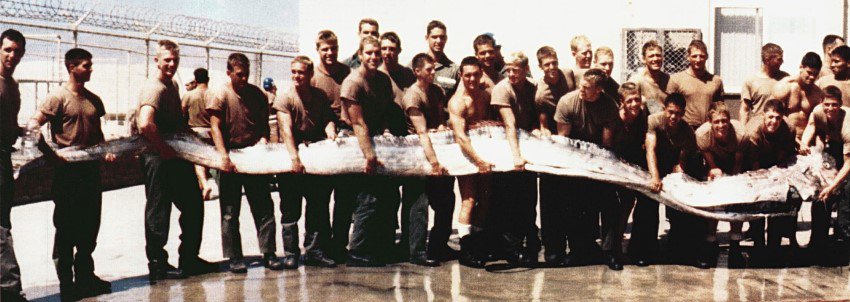A deep-sea creature nicknamed the “doomsday fish” — rarely seen by humans because it typically dwells at depths of up to 1,000 meters — was spotted earlier this month on a Mexican beach and videotaped by American tourists.
Not only did the video of the oarfish go viral, but the rare sighting led to coverage in both the New York Times and the Washington Post.

Having captivated beachgoers at the time and delighted marine enthusiasts ever since, the sighting occurred on Feb. 9 at Playa El Quemado, near the town of Puerto Escondido in Baja California Sur. The area is on the Gulf of California about 28 kilometers south of Loreto.
According to published reports, Robert Hayes, a 64-year-old tourist from Boise, Idaho, was walking along the beach with his wife when they noticed an unusual creature approaching the shore. Initially mistaken for a small alligator or shark, the ribbon-like fish was identified as an oarfish by a Canadian fisherman at the scene.
Known for its elongated, eel-like body and distinctive reddish dorsal fins, the oarfish appeared disoriented as it swam in shallow waters in the surf. Despite attempts to guide it back to deeper waters, the fish repeatedly returned to the beach.
At only a few feet long, this particular oarfish was small, perhaps a juvenile or a smaller species of oarfish. Although no size was reported, Hayes said the fisherman told him that it was among the smallest oarfish he had ever seen.
Some oarfish, notably a species known as the giant oarfish, can reach 8 to 11 meters (26-36 feet) in length, making them the world’s largest bony fish. Typically, they live at depths of 200 to 1,000 meters (660-3,280 feet) and are characterized by a silvery skin that lacks scales and is coated with guanine, giving it a unique appearance.
The mysterious creatures are known for their vertical swimming pattern, which, combined with their reflective coloration, allows them to camouflage effectively in the water column.
SEE IT! The rarely seen deep-sea known as an ‘oarfish’ has washed ashore in Mexico!
Legend has it that the creature, known as a ‘doomsday fish,’ only surfaces from the depths of the ocean when something catastrophic is going to happen. 👀 pic.twitter.com/U5j68io7jx
— Breaking911 (@Breaking911) February 18, 2025
The video that made a Mexican fish an internet celebrity.
In Japanese folklore, oarfish sightings are considered omens of impending earthquakes or other natural disasters, earning them the “doomsday fish” moniker. However, a 2019 study by Japanese researchers debunked any significant link between oarfish appearances and seismic activity.
Although rare, human brushes with oarfish aren’t unprecedented. Last spring, a group of sport fishermen caught a 3-meter-long, 64-kilogram (141 pounds) oarfish off the coast of Cabo San Lucas.
A little before that, there were separate sightings, about a month apart, of two dead oarfishes on beaches near La Paz on the Gulf of Mexico coastline. Another person shared his experience of seeing an oarfish near Loreto in 2006. And Mexico News Daily wrote about catchings or sightings of a 2.4-meter oarfish in July 2019, a 6-meter oarfish in June 2020 and a 3-meter oarfish in July 2020.
Ted Pietsch, a professor emeritus at the University of Washington’s School of Aquatic and Fishery Sciences, said that an oarfish coming to the shore is as unexplainable as it is rare.
“Nobody knows why they do this,” said Pietsch, whose work focuses on deep-sea fishes, particularly anglerfish. “It’s the same as the mystery of why whales beach themselves.”
He and other scientists emphasize that isolated sightings of oarfish do not necessarily indicate broader oceanic distress or species population issues.
This month’s sighting has drawn attention to Playa El Quemado, a pristine beach known for its ecotourism potential. The area offers activities such as night diving, camping and wildlife photography, and nearby there are marine animals such as hammerhead sharks and blue whales.
With reports from Infobae, New York Times and Washington Post
